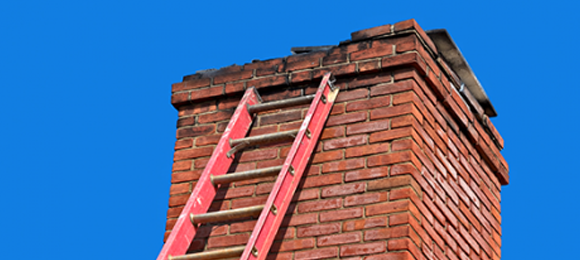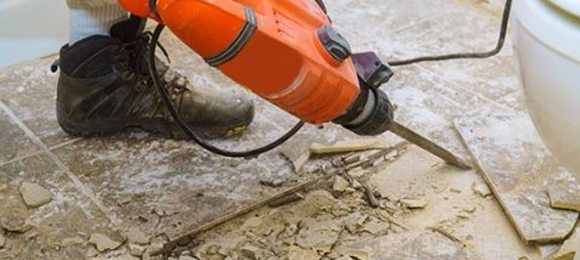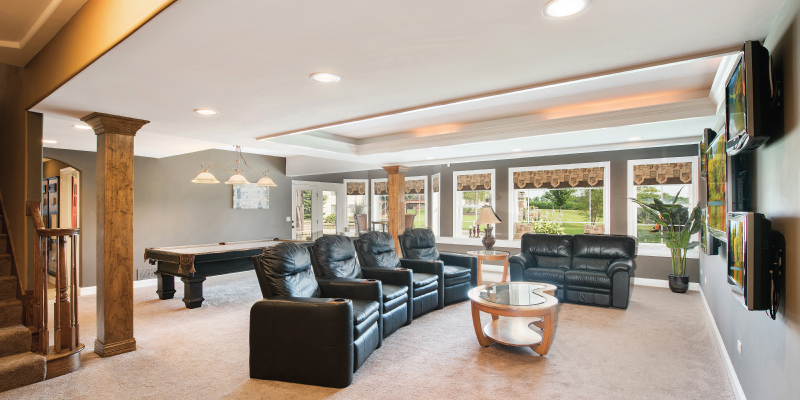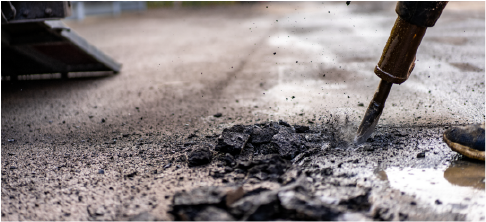
Updated February 9, 2023
How Chimneys Are Removed
Before we describe how to DIY a chimney demolition, watch the video below to get a basic understanding of how the residential chimney removal process works.
From there, you can decide whether this is a project within your skill level or if it's one best left for an experienced demolitionist.
Chimneys are demolished from the top down, one brick at a time.
It's possible to DIY this project, but only if you have experience in completing similar projects.
It's possible to do more harm than good, like damaging the structural integrity of the house, which in turn could cost you well beyond what you were saving in tacking the project yourself.
WARNING: While it is possible to remove a chimney yourself, it isn't a good idea unless you have home improvement experience, you're comfortable performing manual labor up on your roof, and you have a helper nearby to assist you and maintain safety as much as possible from the ground.
Even if all this is true in your case, we recommend hiring a professional to remove your chimney to ensure it is removed as efficiently and safely as possible.
Getting started...
To safely gain access to the chimney, you can rent a scaffold from your local home supply store, like Home Depot.
Make sure that the scaffold has stable flooring and comes equipped with safety rails. Before climbing up onto the scaffold, triple check that it is securely attached to the building.
Then, equipped with a hammer, masonry chisel, and sledgehammer, begin removing the bricks one at a time, starting at the top.
To keep your lawn from getting messy, don’t throw the bricks off the scaffold (as tempting as it may be).
Instead, stack them on the scaffold deck until you’ve got a decent pile, then lower them to the ground using a bucket and rope, and neatly stack the bricks out of the way.
If you have no use for the bricks, the most efficient way to get rid of the bricks is with the help of a 10 yard dumpster.
Instead of stacking up the bricks on the scaffold, simply toss the bricks into the dumpster, or lower the bricks directly into the dumpster using the bucket and rope method.
Work your way down the chimney, removing bricks as you go.
Once you get to roofline level, you can stop and patch the roof, leaving the chimney breast and firebox/fireplace remaining, or you could continue removing the entire chimney and the firebox, too.
It may be a little more cumbersome to chip away the bricks below the roofline, but the process is still the same.
When you get down to the firebox, you’ll have a hole in the wall that you’ll want to rectify as quickly as possible, since it will leave your home open to the elements.
If you hope to turn your current fireplace into a gas log fireplace, the firebox will need to be in solid working shape. If it is, the firebox will simply need to be sealed using a fireproof material.
From there, you can install a ventless log set or a direct vent unit. If you decide to go the ventless route, have a carbon monoxide detector installed.
So far, none of the work you’re doing will affect the home’s structure. However, if your chimney extends below the floor and into the foundation, you’re looking at fixing floor framing and potentially some foundation work.
Cost to Have Chimney Removed
Removing an entire chimney—stack and breast—costs $2,500-$7,500 on average; however, chimney removal costs vary from one chimney to the next for a number of reasons.
There are many aspects to the chimney removal process that will affect how much your project will cost:
- The type of chimney removal method you choose—full or partial
- The size of the chimney
- The materials used to build the chimney
- The amount of debris
- The contractor you hire
Keep reading:
- An Introduction to Chimney Removal
- A Closer Look at Chimney Removal Costs
- 7 Keys to Successfully Hiring a Demolition Contractor
- Everything You Need to Know About Contractor Quotes


